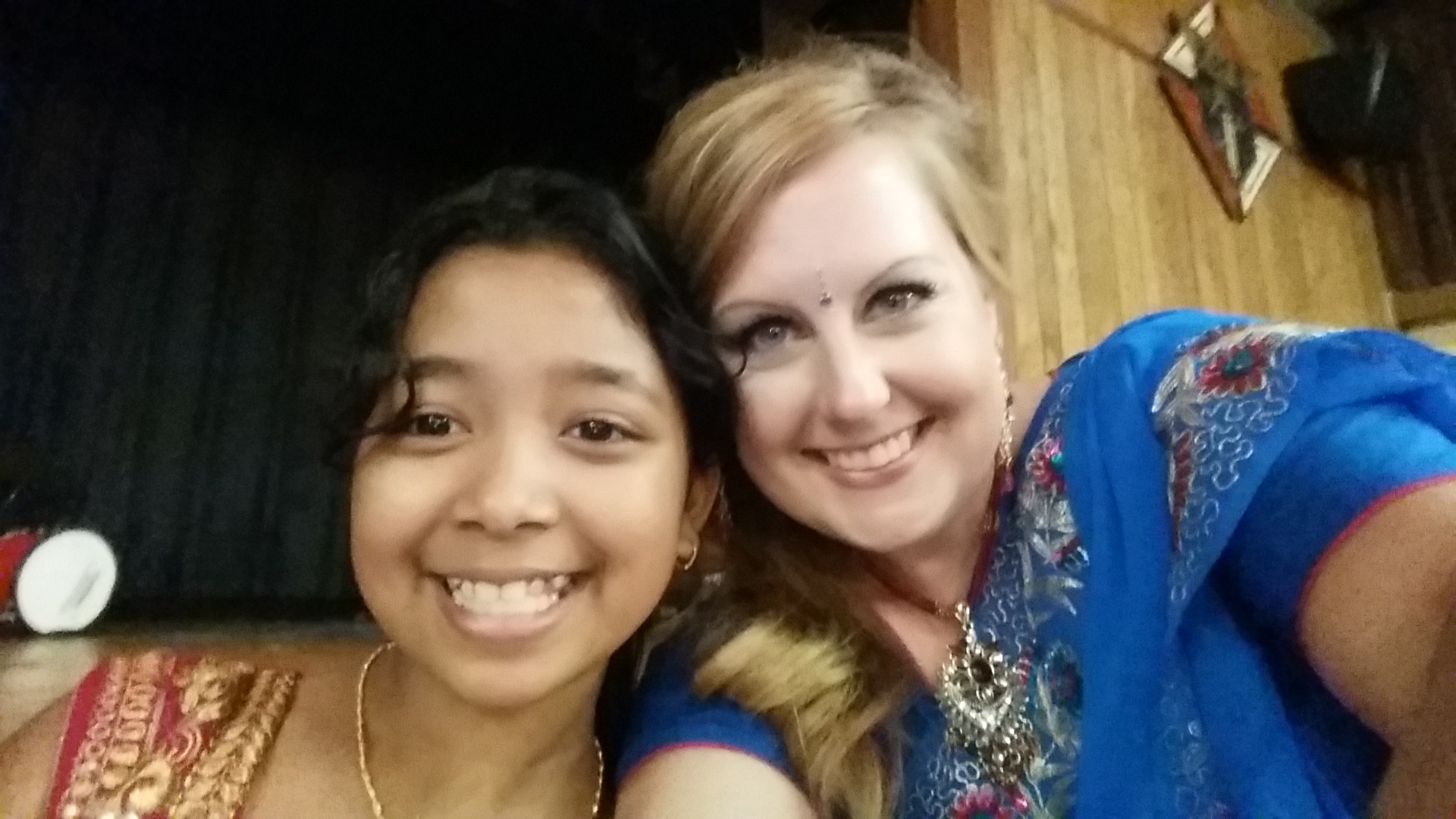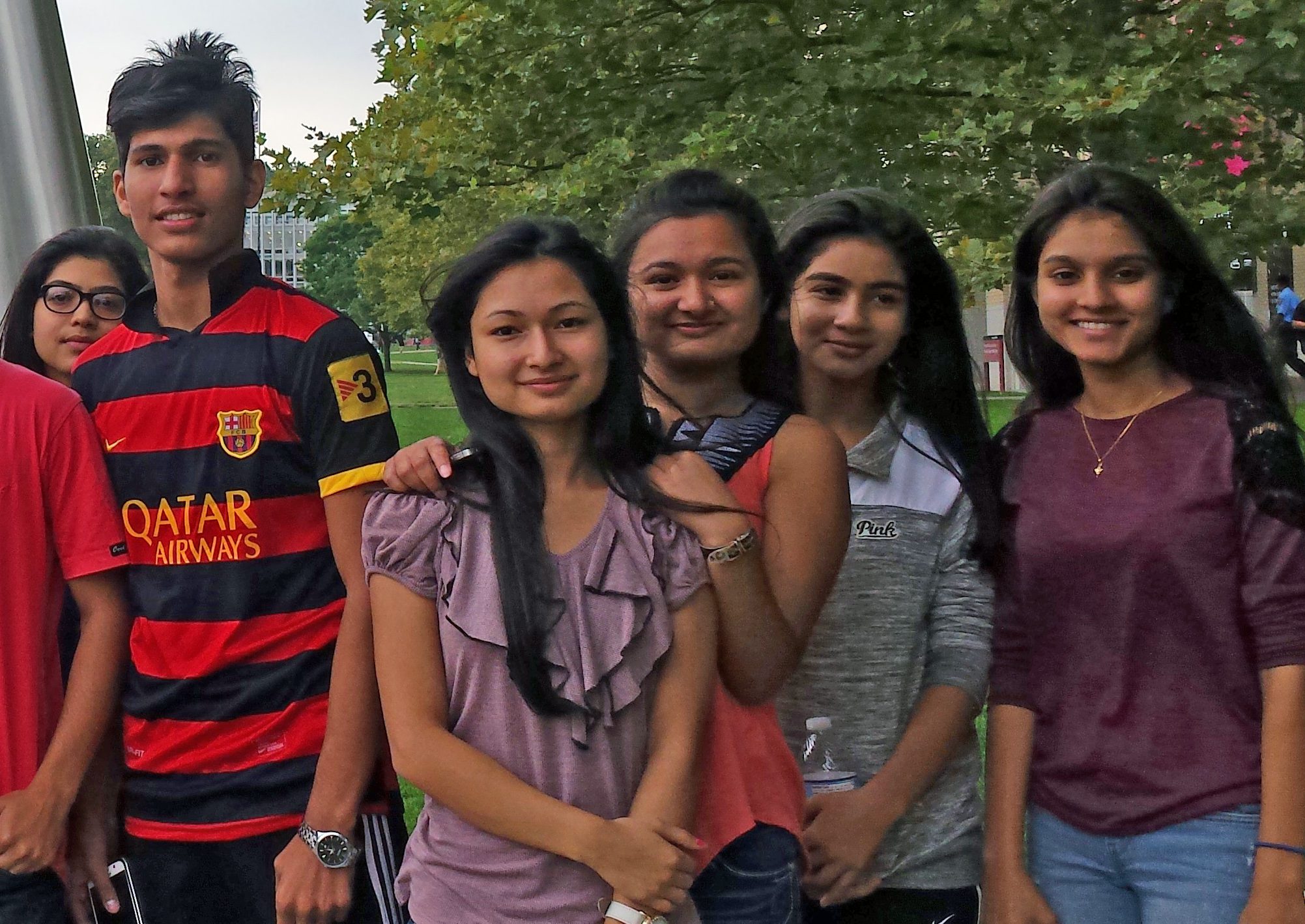Guest Blog: What Visiting a Nepali Refugee Camp Taught Me
By Danielle Drake, US Together Inc.
Jul 24, 2015

The author with the daughter of a Bhutanese refugee, at a wedding in Cleveland, Ohio.
[Courtesy of Danielle Drake]
Some people spend their whole lives working with refugees. I’m a relative newcomer to the field.
In 2011, I began as a volunteer for a refugee resettlement agency in Cleveland and was offered a job a few months later. In 2013 I started working for US Together, an agency that partners with HIAS. The majority of those I work with are Bhutanese. They are one of the largest populations of refugees resettled in Northeast Ohio.
There are over 3,000 Bhutanese refugees in the Cleveland, Ohio area alone. More than 100,000 were forced out of Bhutan in the early 90’s as part of an ethnic cleansing and have been living in refugee camps in Nepal ever since. Two decades later, there are still over 20,000 refugees living in Nepal.
Many of them eventually became my close friends, but while I had heard their stories I couldn’t quite picture the place where they had spent so much time waiting and hoping. A visit seemed unlikely; some people work in refugee resettlement for decades and never visit a camp. But I spoke to my director, who put me in touch with a program officer at HIAS.
Thus began a 10 month process of paperwork and petitions. I fundraised online and through events, and saved money like I had never saved before. I received my approval letter and camp visitation permit on April 2nd, 2015 and flew to Nepal a week later.
The trip to Nepal was a whirlwind of feelings. I was excited, nervous, happy, scared but most of all grateful. One of the refugee camps, called Beldangi, reminded me of a young boy I had met in an ESL class back in Cleveland. I asked what everyone missed most about their home country. The child, who had been born in the camps in Nepal, said he missed the animals. I remember thinking, “we have animals, too! You could go to the zoo, you could get a pet.” But when I first walked into Beldangi Camp I finally understood what this young boy meant. The people in the camps live together with chickens, goats, cows, and yaks. It was like a free range farm. It couldn’t be more different from how I grew up and helped me see how difficult it must be for new refugees to adjust to life in the U.S.
One morning, buses arrived to take a group of about 100 refugees to the transit center in Kathmandu to begin their journey to America. Nearly everyone in the camp came out to say their goodbyes. The thing that struck me most was how quiet it was. There was not yelling or agitation, just quiet hugs and offering blessings for safe travels. These people, who grew up in another land and were then forcibly displaced, were now saying goodbye to friends and family they may not see again for years, if ever. To this day I cannot put into words the mood I felt that day; sorrow, joy, sadness, excitement, fear, all mixed together. It was overwhelming.
I was volunteering in an orphanage outside of Kathmandu when the earthquake hit on April 25, 2015. Bhutanese refugees left the camps to go and build shelters for people left homeless by the disaster. I was struck by this show of love and compassion. Despite the fact that the Bhutanese in Nepal have not been given citizenship or allowed permanent residency, they were eager to volunteer to help. And then they returned to the small bamboo huts they call home in the camps.
I wish I could say I came out of this experience with a concrete plan on how to better serve the refugees I help resettle. The truth is that I came out with as many questions as I went in with. I also came out with more compassion, love, awareness and appreciation for each refugee I meet. I stop what I’m doing and give my undivided attention to each refugee that enters my office. I make time to have a cup of tea with them because I now understand how those 10 minutes can change their entire perception of our relationship and their new life here.

